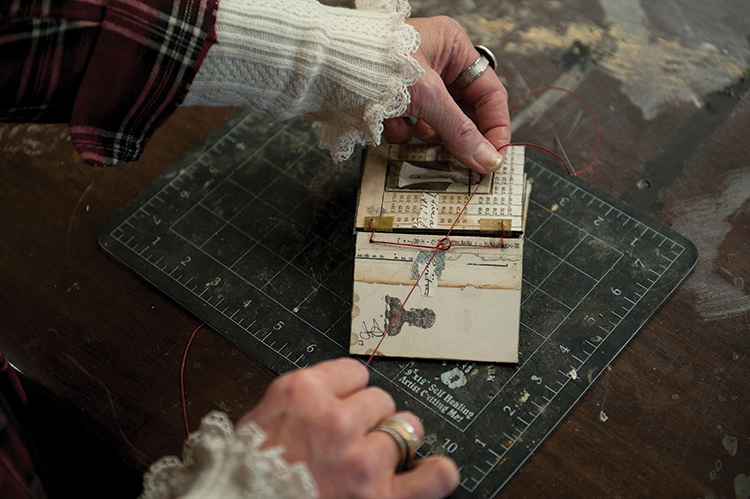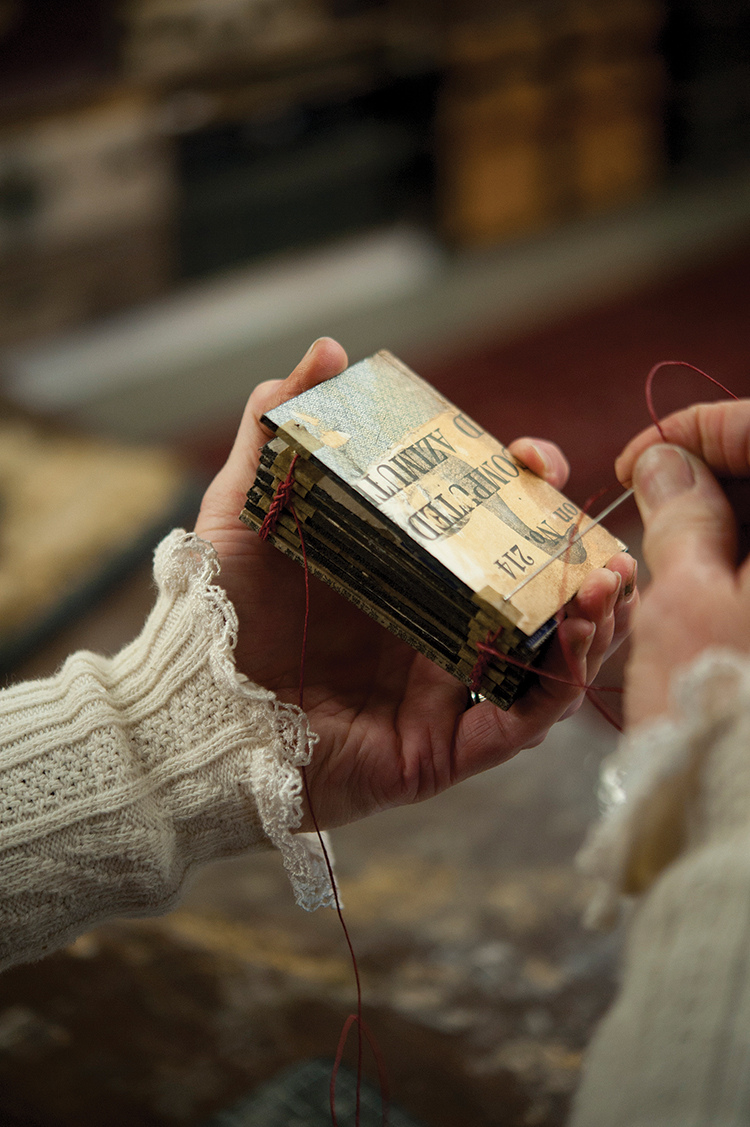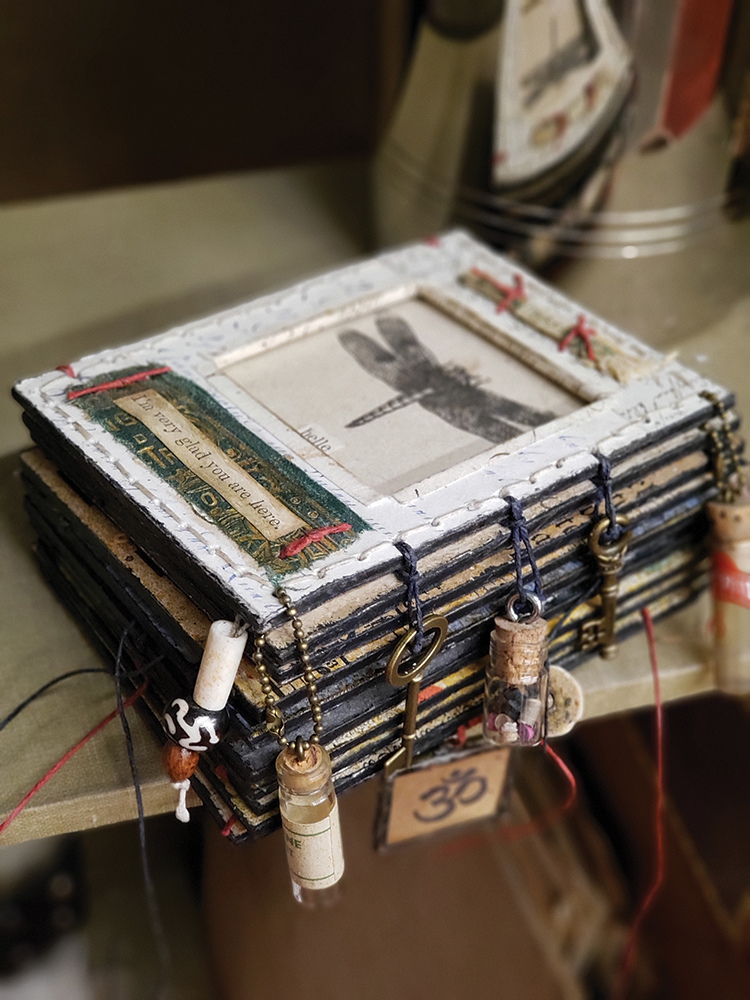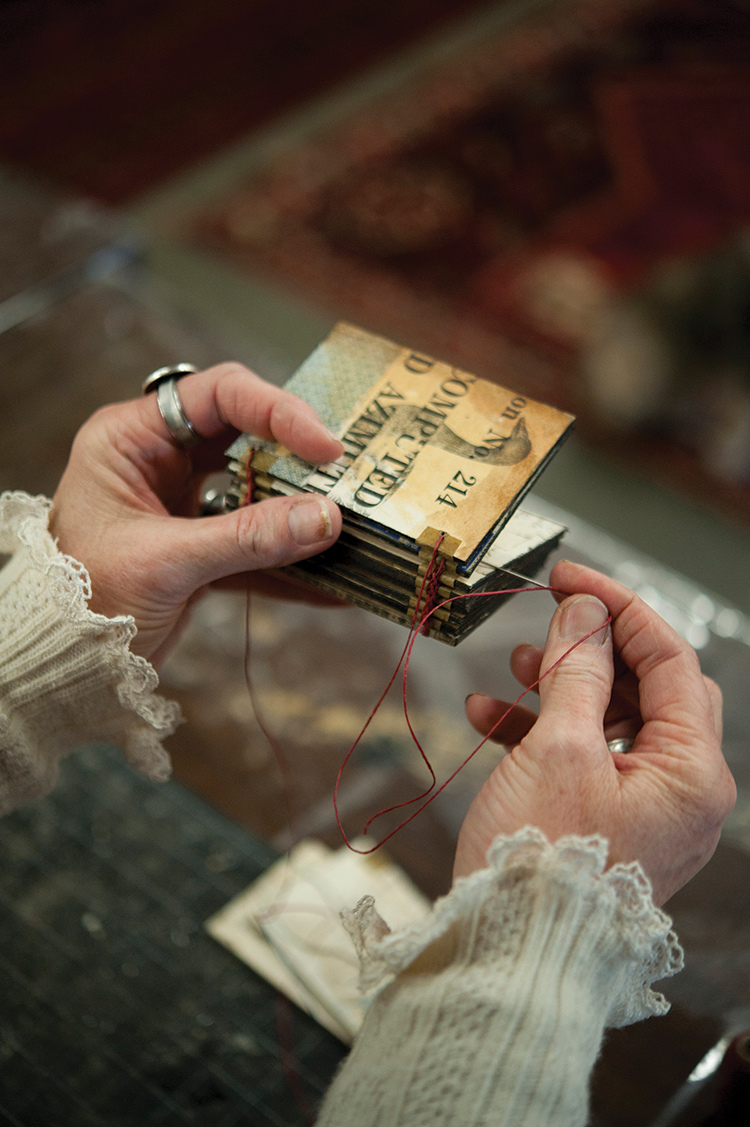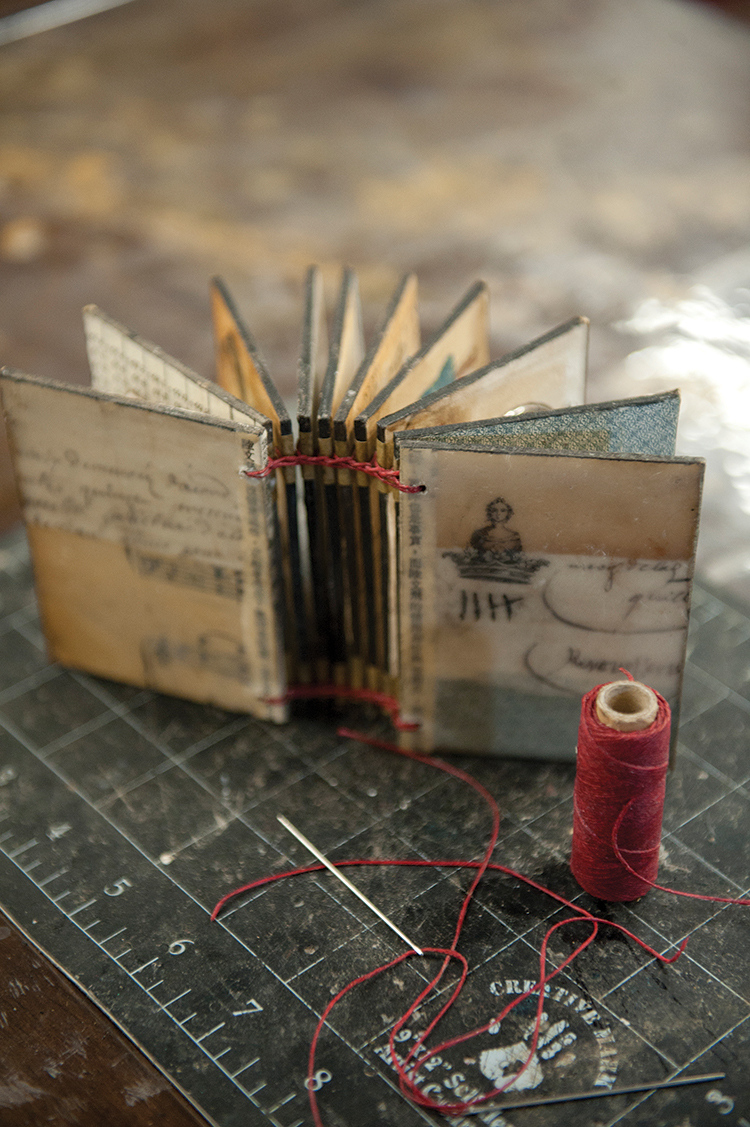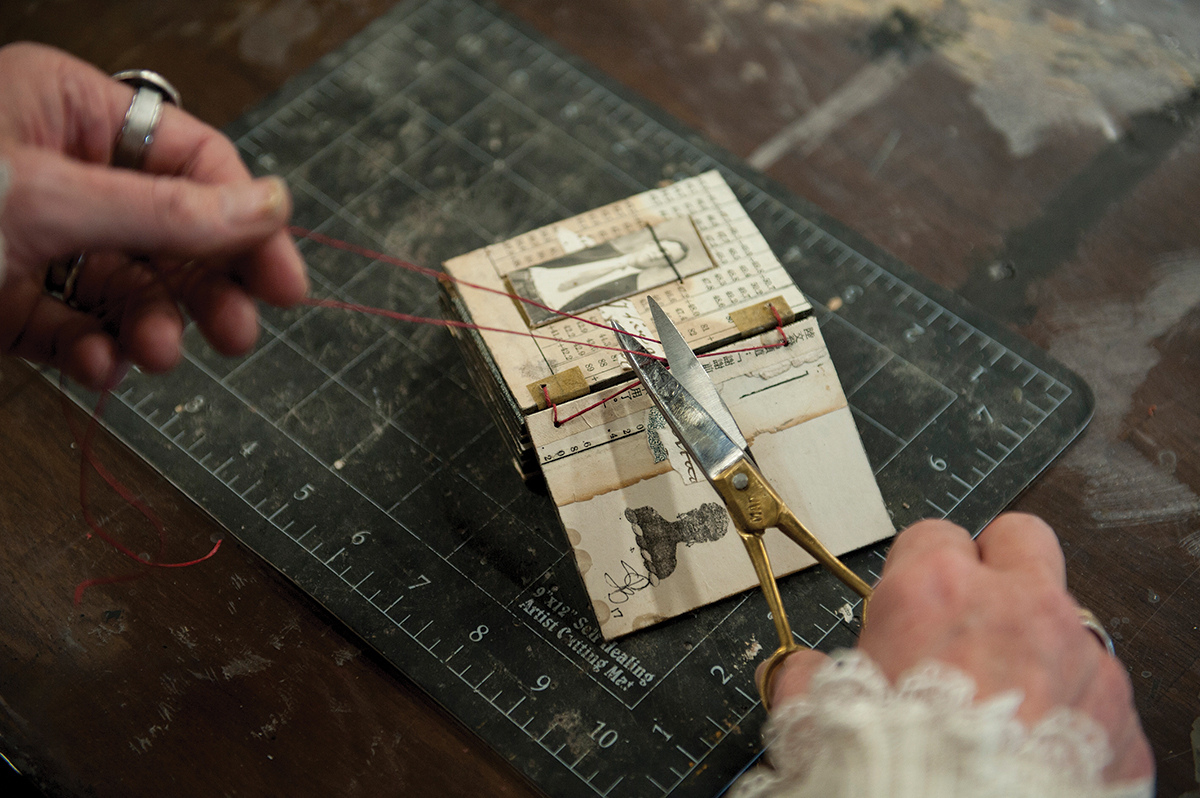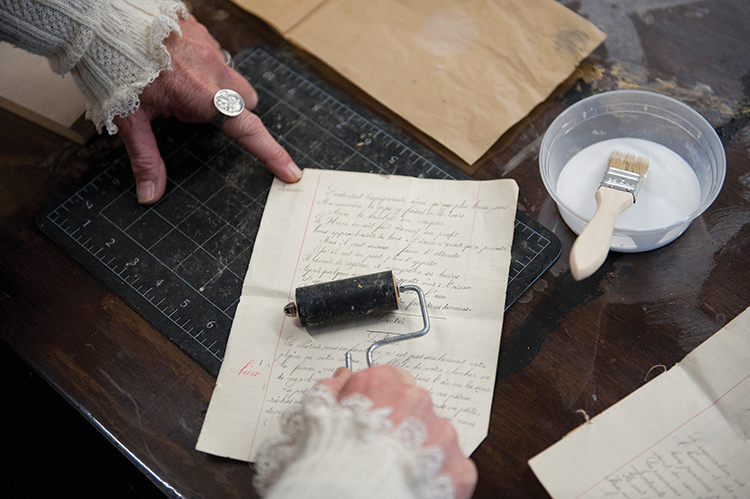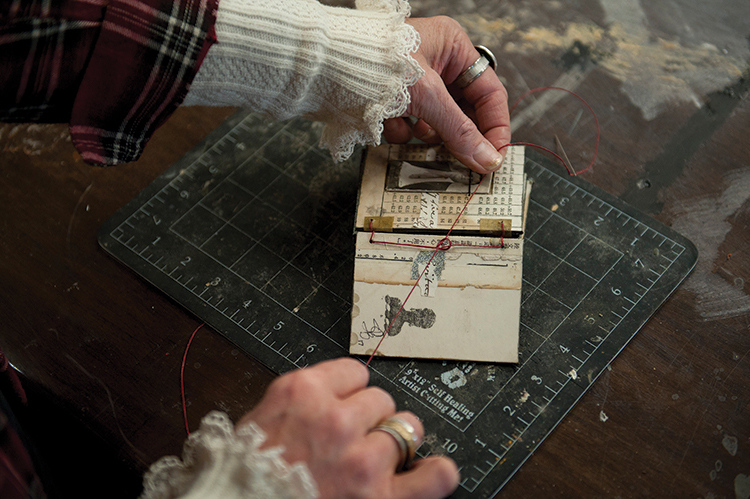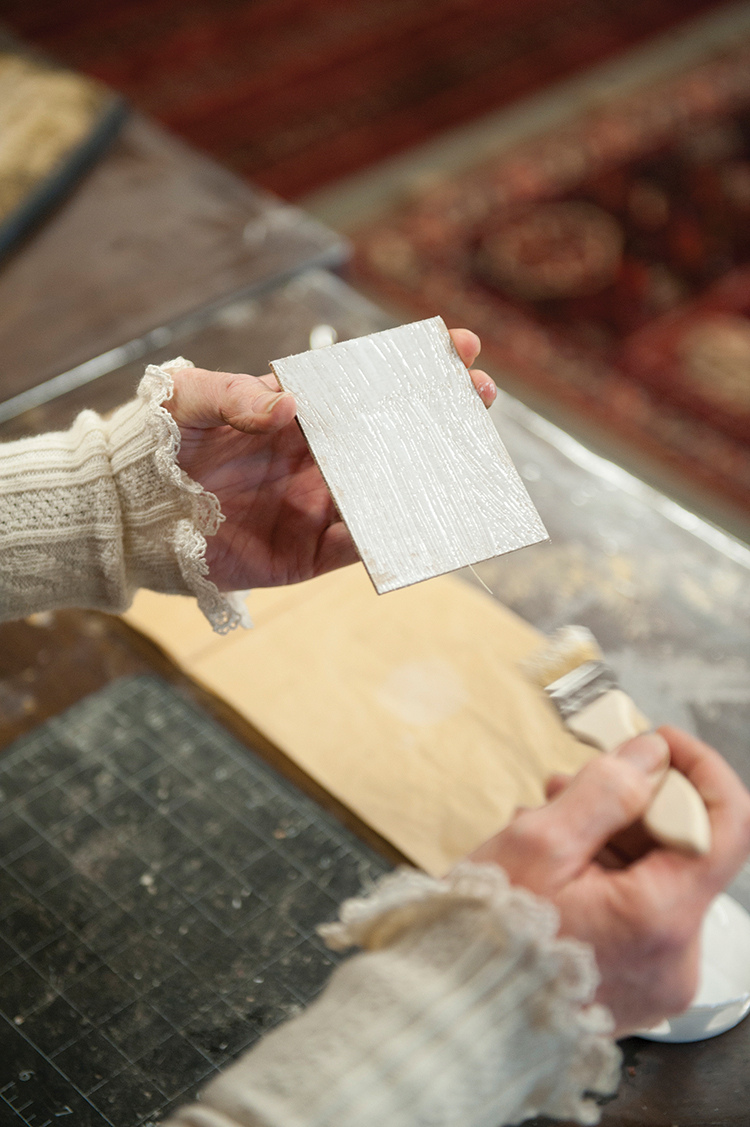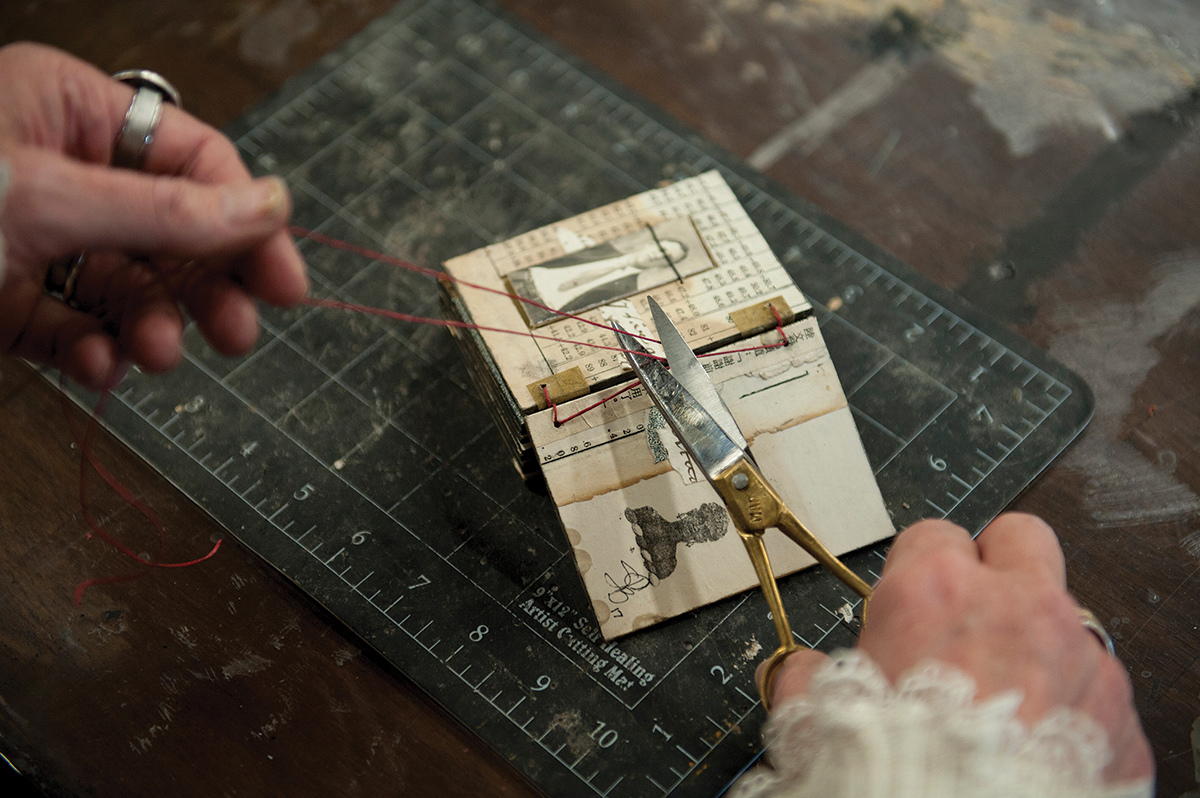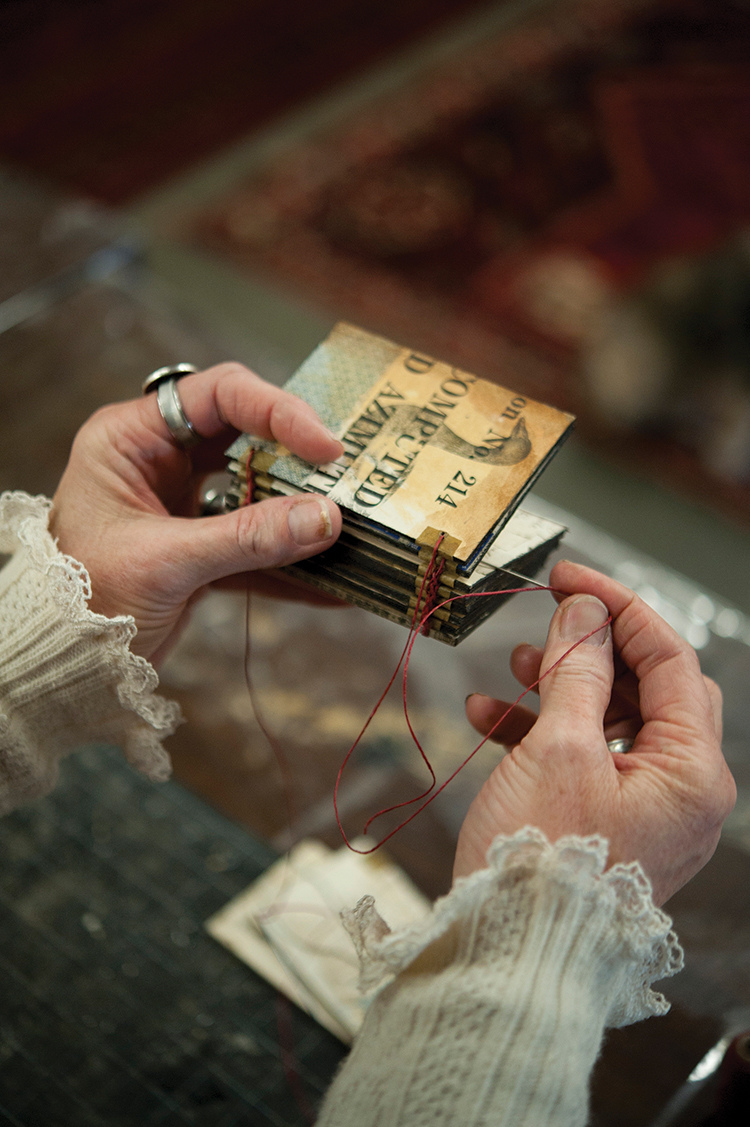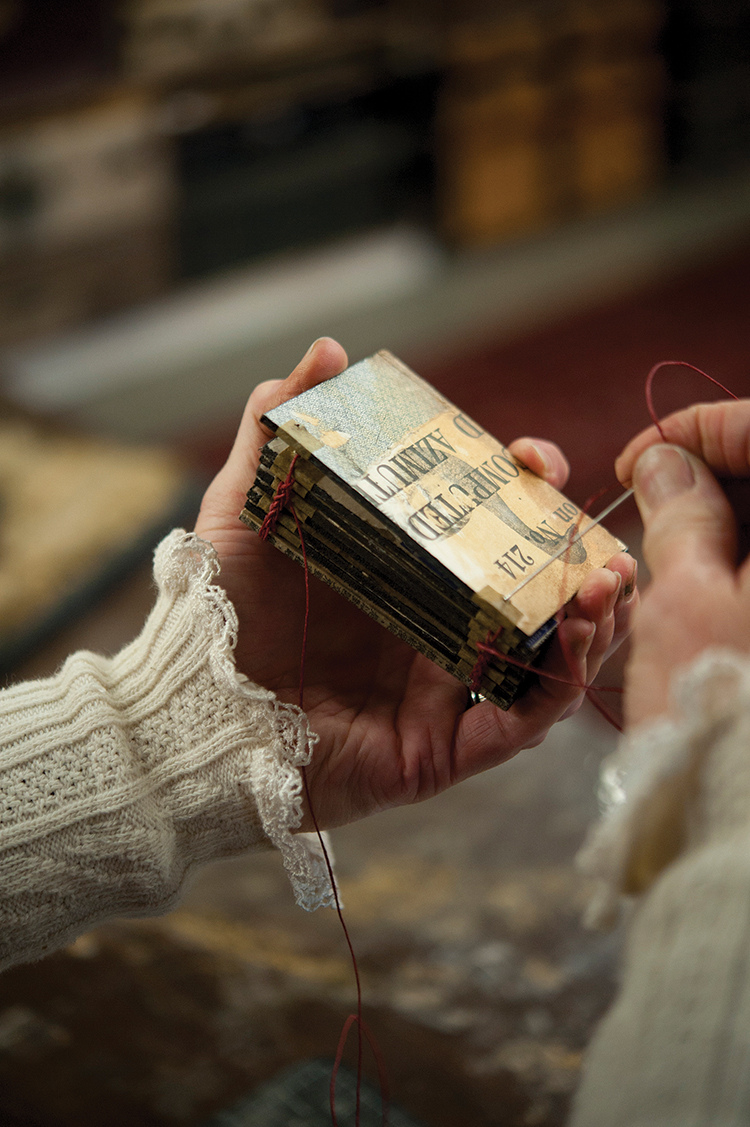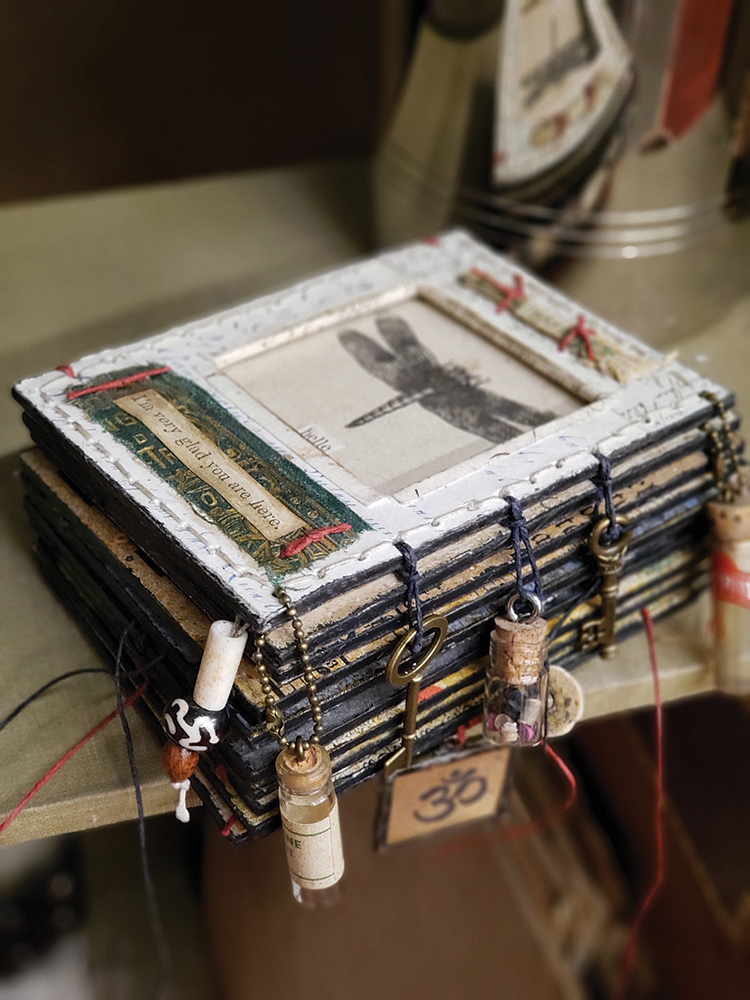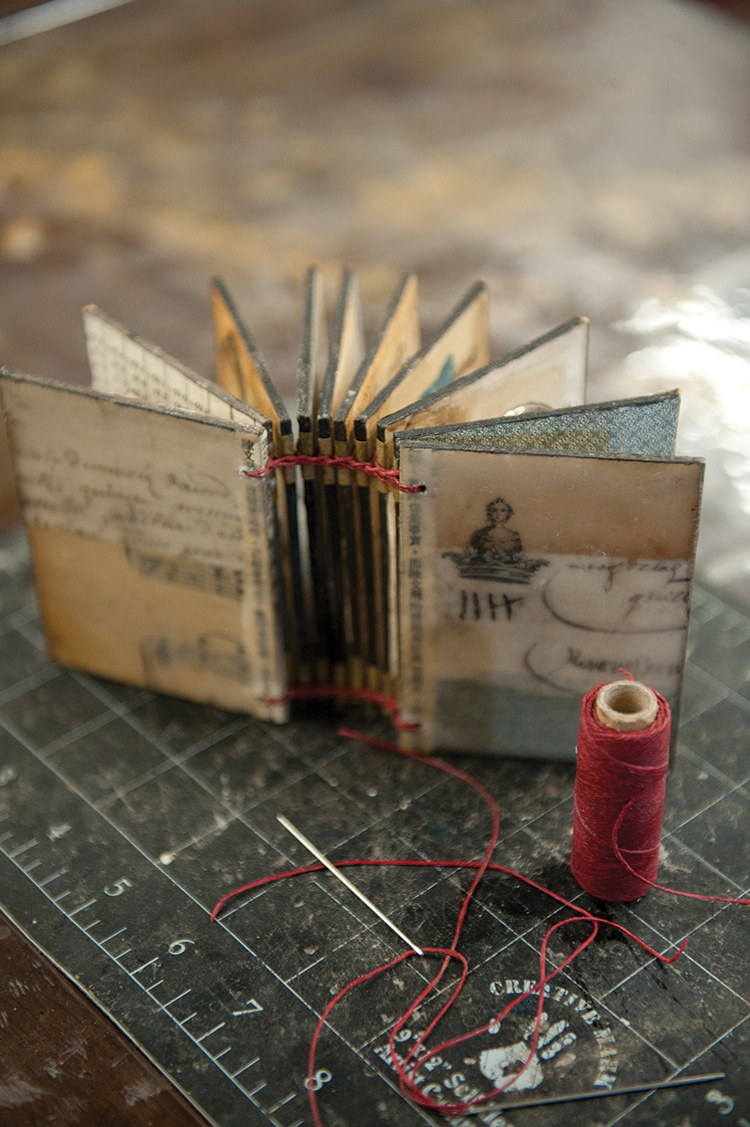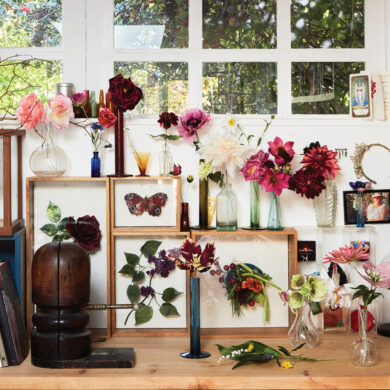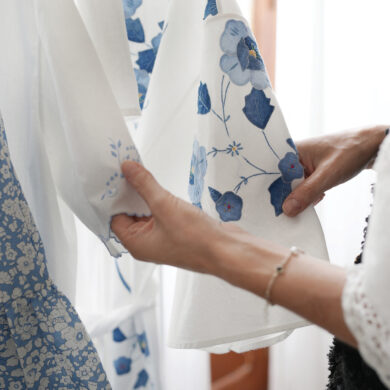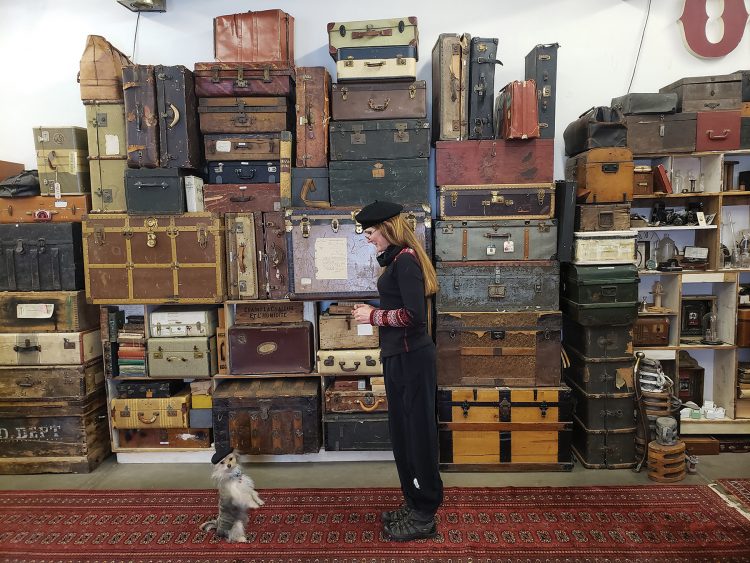
I slept with the first Coptic Stitch book that I made. I slept with it on my nightstand next to my bed the first night I brought it home after I had made it in class that day. It was February 2009, and I took my first Coptic Stitch book making class with Marsha Shaw at The San Francisco Center for the Book. That day I worked on (not all that successfully) The Coptic Stitch. It was long before that February of 2009 that I realized I had a fascination for book making. I have collected bookmaking books for many years. Book making has always captured my attention, even in 7th grade when I made my very first “real” book for a poetry project. Over the years, I had collected many more books on making books than the number of books I had actually made. I think the reason I hesitated was precision. Ugh. All that precise measuring stopped me every time. It just seemed like such a fine science, and I just didn’t think I was authorized or mature enough to take part in such practice. I absolutely honor the precision, talent, discipline and dedication it takes for book making and guess I thought I would leave bookmaking to the professionals!
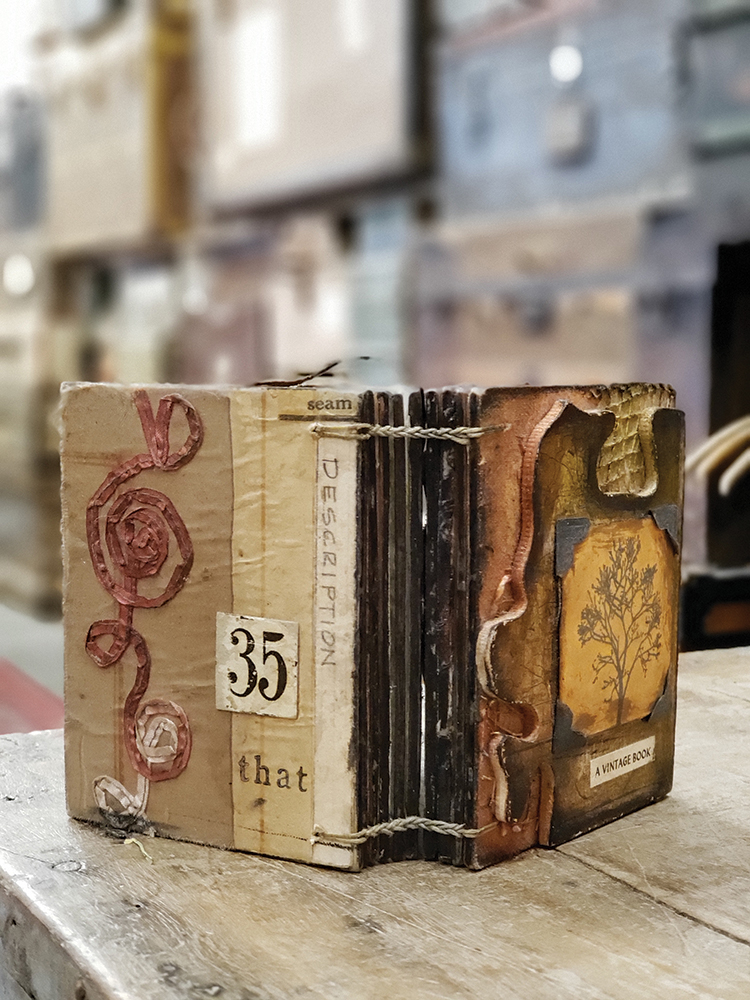
After I took that Coptic Stitch class, I decided I would never do The Coptic Stitch again. It really frustrated me because it wasn’t easy for me, there were rules that had to be followed, and I just didn’t need that kind of thing in my life. In a lot of ways, it was the Coptic Stitch that brought me around to practicing patience. Shortly after I slept with my Coptic Stitch book, I was asked by Sallianne McClelland and Ellen Legare to teach at Art is You Mixed Media Art Retreats in Petaluma, California. I decided I wanted to master that Coptic Stitch and teach it, so I went to work conquering that dreaded Stitch.
Perfection can lead to Procrastination, which can lead to Paralysis.
UNKNOWN
I did call Marsha Shaw and asked her if she minded if I taught a class similar to hers and she gave me her blessing. In my mission to conquer The Coptic Stitch and prepare to teach it, I really made a lot of books. I think I finally made more books than the number of bookmaking books that I had collected! I still have that Coptic stitched book that I slept with that night in February of 2009 and it still has a mistake in the binding. I decided to keep it with its mistake to remind me that the road is not always perfect, and we don’t always get it right the first time. Which brings up perfectionism. In my workshops, I sometimes talk about perfectionism. Perfection could have stopped me from bookmaking, but instead I decided to confront that darn Stitch, and am I glad that I did.
Bookmaking has become a fascination for me. Making books provides a satisfying platform for one’s own creative personality and exercising one’s own strengths.
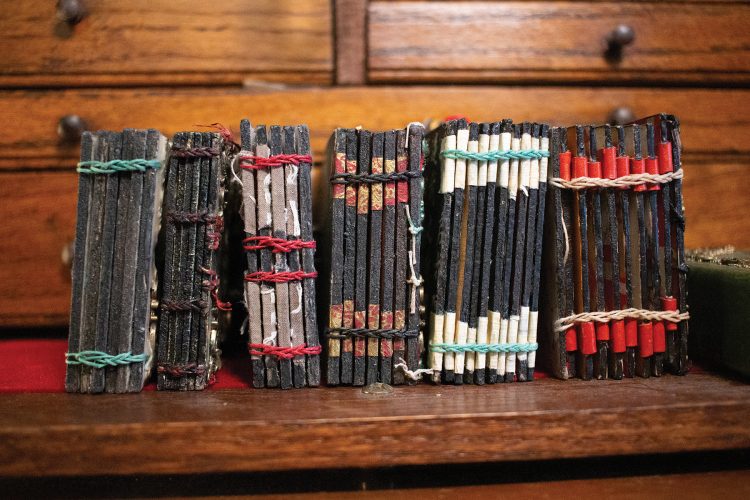
I can move around my studio and make books when I get stuck on my bigger art pieces. The structure of making books has helped me to direct myself when I get lost. I took it as my own personal mission to simplify and perfect the Coptic Stitch. Have you ever read an instruction pamphlet and thought, “Who wrote this?” Well, I have been writing and rewriting my own Coptic Stitch instruction pamphlet for just about 10 years in hopes that no one will have to wonder in frustration, “Who the heck wrote these instructions?”
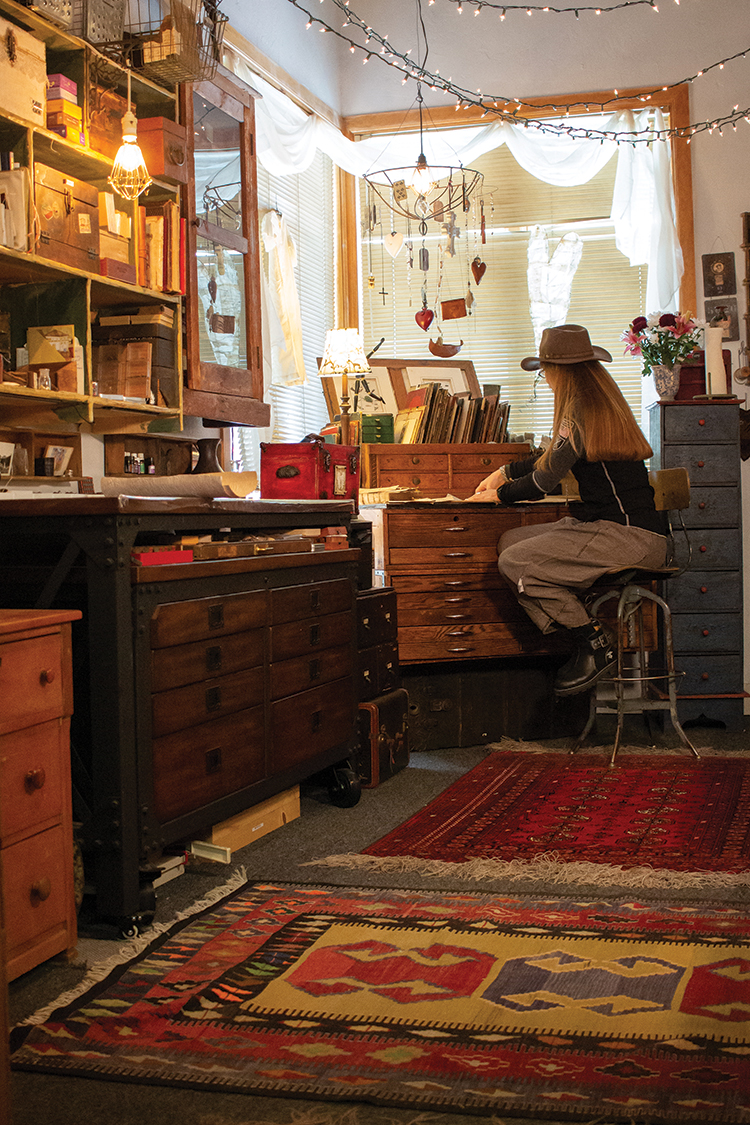
I now have just about 10 years of teaching the Coptic Stitch in various workshops around the country and internationally. Once I really could successfully bind single pages with my eyes closed, I wondered just how small of a book I could make, so I went to work. These babies are pretty small, about an inch tall. So, after I had obsessively created some very small books, I wondered just how big a book I could bind with the Coptic Stitch. Currently, my tallest is almost 2 and half feet tall, but I am not finished yet with how big I can go. So that is my Coptic Stitch obsession confession.
Everything you want is on the other side of fear.
Jack Canfield
I have found that I can exercise almost any medium making these books. I have incorporated collage, photos, clay, resin, found objects, personal memories, stitching, eco dyeing, encaustic, drawing, painting, embedding objects, leather, lace, fabric, even words! The pages are so easy to add onto and embellish because of The Coptic Stitch. The Coptic Stitch allows the book to lay flat after it is bound, and items with a little bulk or chunk easily fit.
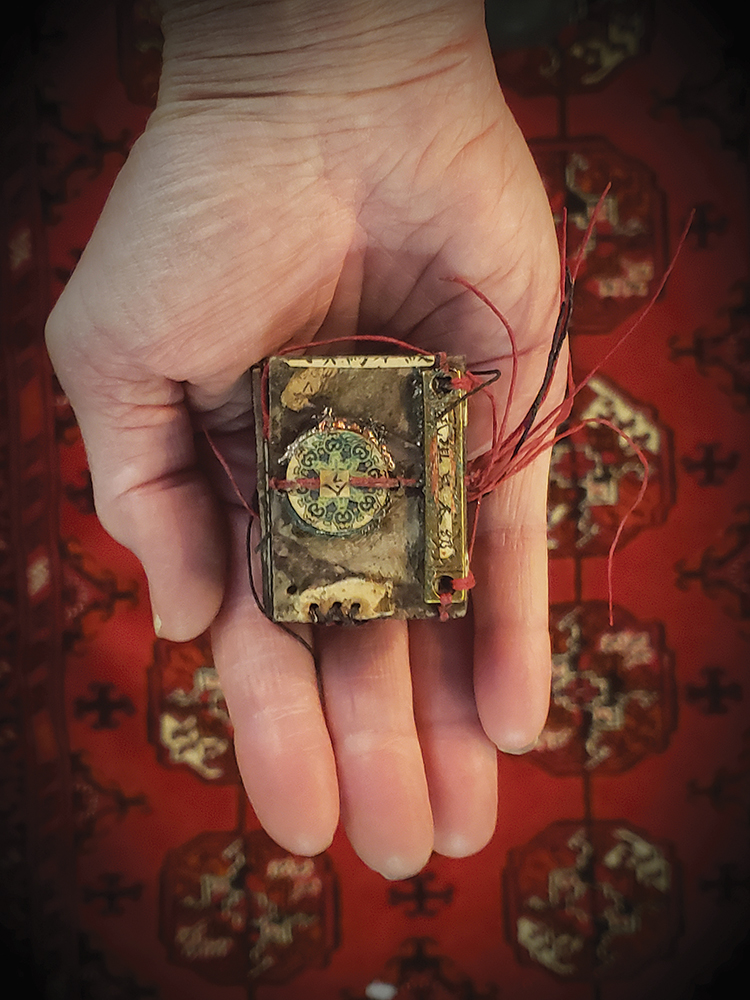
Creating these books starts with covering the pages. I make a variety of sizes and the smaller the, book the thinner the material can be. I use actual wood for the bigger books. For the books that are about the size of a deck of playing cards, I usually use book board. I have used almost anything for the pages that I can drill or poke a hole into.
Once the pages are covered with paper, paint, fabric, leather, lace, etc., I like to finish the edges with black paint. I find that the black paint can really show the color of the binding thread on the bound edge of the book.
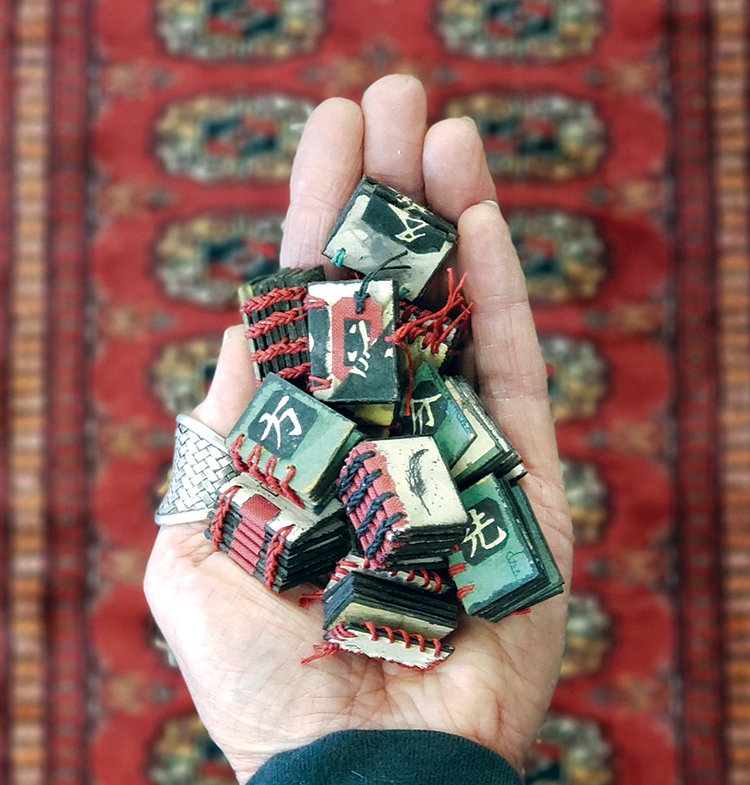
The next step is to poke or drill the holes for the binding. The most important part of the holes is to make sure you can get your needle through them. This single page Coptic Stitch uses two needles and one length of waxed linen thread and is based on Keith Smith’s bookbinding instructions. Once the needles are threaded on each end of the waxed linen thread, the pages are stitched one by one onto the previous page. Each page has two steps and I have devised a little reminder routine of “down”(step one) through each of the holes in each of the pages, then the needles are brought “around” (step two) to lock each page onto the previous page. It is always such an accomplishment and time of celebration once all the pages have been stitched together, and it is time to tie and cut the thread.
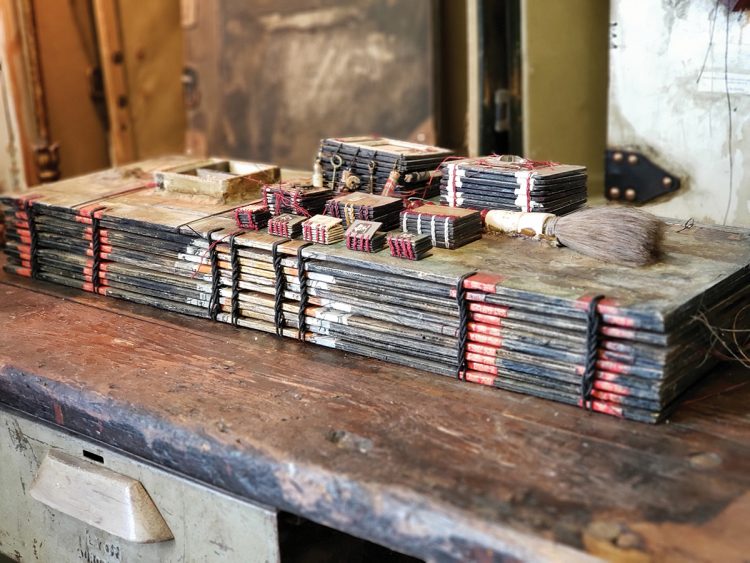
This last year really did affect so many areas of so many of our lives, and travel was one of those areas. All of us instructors really missed being able to travel to our retreats and welcome students into workshops in our studios. With that being said, there are many retreat goers that have also missed being able to gather, create and connect.
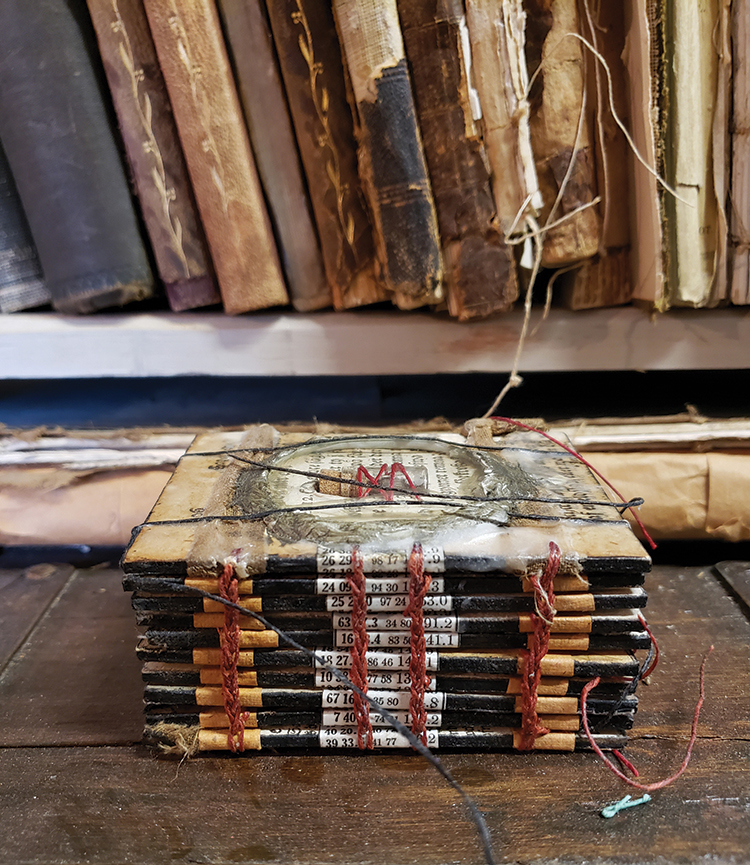
When they shut everything down in my hometown in March, I was able to work with my 10-year-old son making books at home. We call them our COVID books and together we made well over 100 books! It was a wonderful opportunity for us to bond and spend time together doing one of my favorite things to do in the world, and that is to create. Turns out, my son was very good at book making!
As time went on and restrictions remained in place, the need to continue to create and to teach was always on the forefront of my mind. This motivated me to finally get to work on something I have been thinking about for many years and that is to offer an online course, which is essentially like taking one of my workshops. I decided (of course) my first course would be Between the Pages and the Coptic Stitch. I found that as I was writing, designing, filming and editing these first couple of courses, it allowed me to refine the best and most important parts of my workshops in the form of an online course.
The warm and heartfelt feedback on these courses has validated all the effort, passion and investment I put into these courses and mastering the Coptic Stitch. During these isolating times, I have received letters that these courses have been a true gift and an escape from the daily restrictions that these times currently have us under.
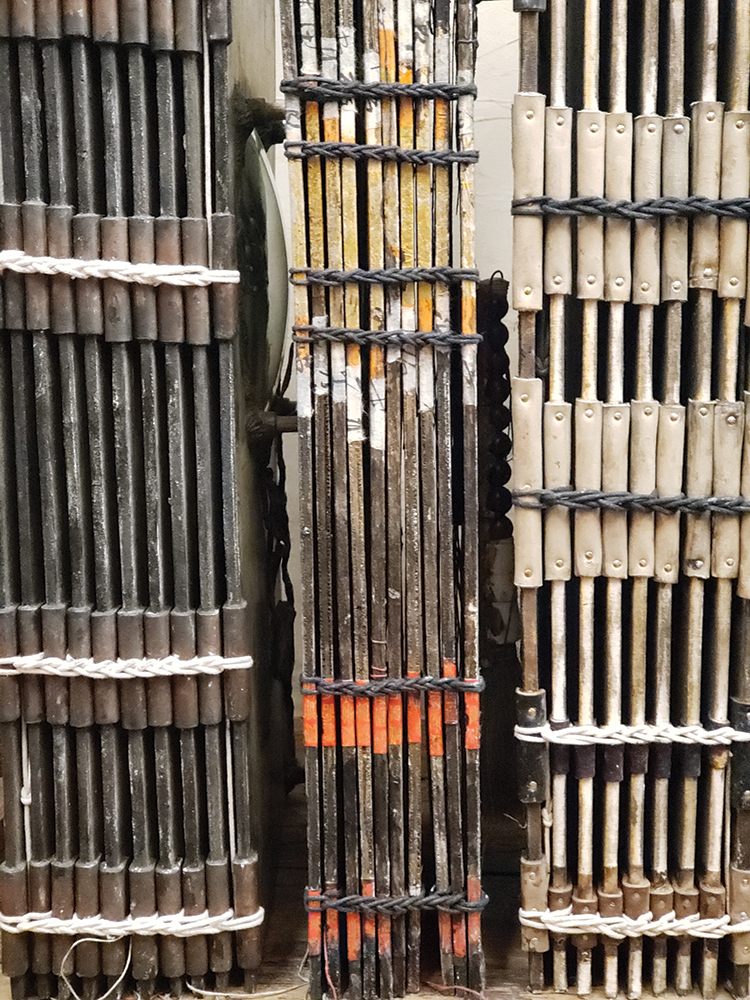
My online courses are designed for a spectrum of experience levels because I do feel that everyone does have a voice inside that can come out in the form of art (or a book!). My mission and my wish for my courses (and workshops) are to help one achieve success. Sometimes it is frustrating, like The Coptic Stitch, but eventually it is worth it. I want to take my experience with The Coptic Stitch and offer the belief that we can overcome. We can overcome and we can create a book that we want to sleep with (in all of its perfectly imperfect perfection?)
The Coptic stitch is one of the oldest known forms of bookbinding.

I slept with the first Coptic Stitch book that I made. I slept with it on my nightstand next to my bed the first night I brought it home after I had made it in class that day. It was February 2009, and I took my first Coptic Stitch book making class with Marsha Shaw at The San Francisco Center for the Book. That day I worked on (not all that successfully) The Coptic Stitch. It was long before that February of 2009 that I realized I had a fascination for book making. I have collected bookmaking books for many years. Book making has always captured my attention, even in 7th grade when I made my very first “real” book for a poetry project. Over the years, I had collected many more books on making books than the number of books I had actually made. I think the reason I hesitated was precision. Ugh. All that precise measuring stopped me every time. It just seemed like such a fine science, and I just didn’t think I was authorized or mature enough to take part in such practice. I absolutely honor the precision, talent, discipline and dedication it takes for book making and guess I thought I would leave bookmaking to the professionals!

After I took that Coptic Stitch class, I decided I would never do The Coptic Stitch again. It really frustrated me because it wasn’t easy for me, there were rules that had to be followed, and I just didn’t need that kind of thing in my life. In a lot of ways, it was the Coptic Stitch that brought me around to practicing patience. Shortly after I slept with my Coptic Stitch book, I was asked by Sallianne McClelland and Ellen Legare to teach at Art is You Mixed Media Art Retreats in Petaluma, California. I decided I wanted to master that Coptic Stitch and teach it, so I went to work conquering that dreaded Stitch.
Perfection can lead to Procrastination, which can lead to Paralysis.
UNKNOWN
I did call Marsha Shaw and asked her if she minded if I taught a class similar to hers and she gave me her blessing. In my mission to conquer The Coptic Stitch and prepare to teach it, I really made a lot of books. I think I finally made more books than the number of bookmaking books that I had collected! I still have that Coptic stitched book that I slept with that night in February of 2009 and it still has a mistake in the binding. I decided to keep it with its mistake to remind me that the road is not always perfect, and we don’t always get it right the first time. Which brings up perfectionism. In my workshops, I sometimes talk about perfectionism. Perfection could have stopped me from bookmaking, but instead I decided to confront that darn Stitch, and am I glad that I did.
Bookmaking has become a fascination for me. Making books provides a satisfying platform for one’s own creative personality and exercising one’s own strengths.

I can move around my studio and make books when I get stuck on my bigger art pieces. The structure of making books has helped me to direct myself when I get lost. I took it as my own personal mission to simplify and perfect the Coptic Stitch. Have you ever read an instruction pamphlet and thought, “Who wrote this?” Well, I have been writing and rewriting my own Coptic Stitch instruction pamphlet for just about 10 years in hopes that no one will have to wonder in frustration, “Who the heck wrote these instructions?”

I now have just about 10 years of teaching the Coptic Stitch in various workshops around the country and internationally. Once I really could successfully bind single pages with my eyes closed, I wondered just how small of a book I could make, so I went to work. These babies are pretty small, about an inch tall. So, after I had obsessively created some very small books, I wondered just how big a book I could bind with the Coptic Stitch. Currently, my tallest is almost 2 and half feet tall, but I am not finished yet with how big I can go. So that is my Coptic Stitch obsession confession.
Everything you want is on the other side of fear.
Jack Canfield
I have found that I can exercise almost any medium making these books. I have incorporated collage, photos, clay, resin, found objects, personal memories, stitching, eco dyeing, encaustic, drawing, painting, embedding objects, leather, lace, fabric, even words! The pages are so easy to add onto and embellish because of The Coptic Stitch. The Coptic Stitch allows the book to lay flat after it is bound, and items with a little bulk or chunk easily fit.

Creating these books starts with covering the pages. I make a variety of sizes and the smaller the, book the thinner the material can be. I use actual wood for the bigger books. For the books that are about the size of a deck of playing cards, I usually use book board. I have used almost anything for the pages that I can drill or poke a hole into.
Once the pages are covered with paper, paint, fabric, leather, lace, etc., I like to finish the edges with black paint. I find that the black paint can really show the color of the binding thread on the bound edge of the book.

The next step is to poke or drill the holes for the binding. The most important part of the holes is to make sure you can get your needle through them. This single page Coptic Stitch uses two needles and one length of waxed linen thread and is based on Keith Smith’s bookbinding instructions. Once the needles are threaded on each end of the waxed linen thread, the pages are stitched one by one onto the previous page. Each page has two steps and I have devised a little reminder routine of “down”(step one) through each of the holes in each of the pages, then the needles are brought “around” (step two) to lock each page onto the previous page. It is always such an accomplishment and time of celebration once all the pages have been stitched together, and it is time to tie and cut the thread.

This last year really did affect so many areas of so many of our lives, and travel was one of those areas. All of us instructors really missed being able to travel to our retreats and welcome students into workshops in our studios. With that being said, there are many retreat goers that have also missed being able to gather, create and connect.

When they shut everything down in my hometown in March, I was able to work with my 10-year-old son making books at home. We call them our COVID books and together we made well over 100 books! It was a wonderful opportunity for us to bond and spend time together doing one of my favorite things to do in the world, and that is to create. Turns out, my son was very good at book making!
As time went on and restrictions remained in place, the need to continue to create and to teach was always on the forefront of my mind. This motivated me to finally get to work on something I have been thinking about for many years and that is to offer an online course, which is essentially like taking one of my workshops. I decided (of course) my first course would be Between the Pages and the Coptic Stitch. I found that as I was writing, designing, filming and editing these first couple of courses, it allowed me to refine the best and most important parts of my workshops in the form of an online course.
The warm and heartfelt feedback on these courses has validated all the effort, passion and investment I put into these courses and mastering the Coptic Stitch. During these isolating times, I have received letters that these courses have been a true gift and an escape from the daily restrictions that these times currently have us under.

My online courses are designed for a spectrum of experience levels because I do feel that everyone does have a voice inside that can come out in the form of art (or a book!). My mission and my wish for my courses (and workshops) are to help one achieve success. Sometimes it is frustrating, like The Coptic Stitch, but eventually it is worth it. I want to take my experience with The Coptic Stitch and offer the belief that we can overcome. We can overcome and we can create a book that we want to sleep with (in all of its perfectly imperfect perfection?)
The Coptic stitch is one of the oldest known forms of bookbinding.










